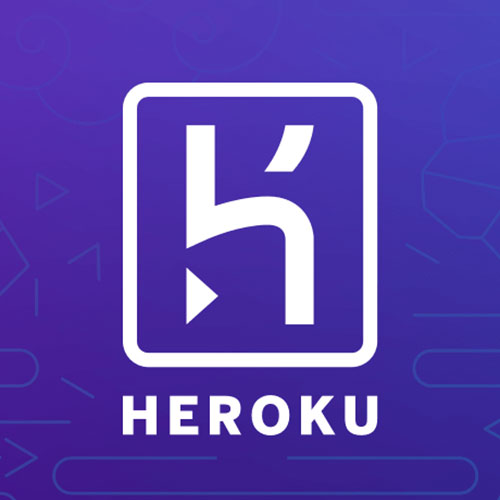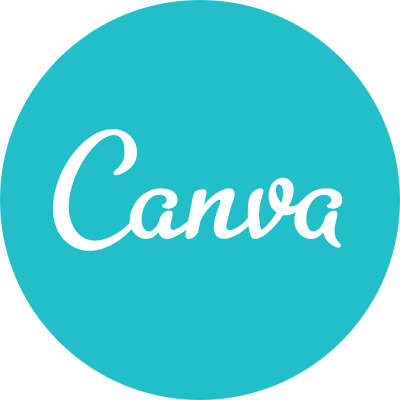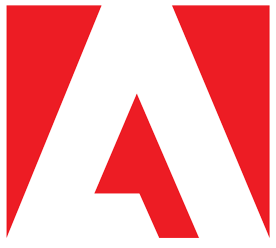How These Two Brothers Built A Time Tracking And Invoicing App
Hello! Who are you and what business did you start?
Hey there! My name is Drew Haines and I am the founder of HoursLogger. My brother and I started our business over 6 years ago and set out to build a simple time tracking and invoicing app that we loved for our own consulting business.
Both Matt and I have been doing software & accounting consulting for years. I’m the software guy and he’s the accounting guy. We wanted to make a time tracker that was as simple & intuitive as possible. We figured if we built an app that we loved, other people might like it too. So HoursLogger was built for people just like us, small business owners that run a consulting/freelancing business.
If I were, to sum up, my experience in one phrase, it would be “slowly but surely”. HoursLogger has always been a side project that’s slowly moving in the right direction. We made ~$9k in passive income last year, are currently closing in on $1k MRR and the app is in a great position to grow.

What's your backstory and how did you come up with the idea?
My entrepreneurial journey started while I was in college. My parents were running a family-owned construction business at the time. Mom was head of the office, Dad was the lead in the field, my sister managed the subcontractors and meetings, and Matt and I worked on the job site.

All our lives changed when we took a project that went really bad. The project was estimated to take about a year and $1M. It ended up going ~3 years and went well over the budget. We completed the job but it wrecked our family financially.
I felt a personal responsibility to do something about it and started various businesses that didn’t get far. Surfboard beer pong tables, custom shaped whiteboards, and handy-man services for students moving in/out. None of it worked until I put up flyers for tutoring electrical and computer engineering.


I printed flyers at the beginning of the semester and got 1 call at the end of the semester to help someone study for their final. When we finished, he gave me $40 cash and I remember thinking that was the easiest $40 I’ve made ever. At that moment, I knew I was on to something.
I ended up growing the tutoring business to the point where I was charging $50/hr, running group sessions (15-20+ people), and automated many tasks through my website. It was a great playground for business but I didn’t want to tutor forever. That’s when I had the idea to switch to software consulting and started DevCo with Matt.
Once Matt and I got our first real project, we needed to track our time and details so we knew how much to bill and what to put in the line items. It took hours to go through both of our times and sync up on who did what and what was billable.
We took a look at the existing solutions and didn’t like any of the apps we found. Many felt too complex. They had too many features and didn’t feel easy to use. How do I input time? How do I view my time? How do I create the invoice? These were things I thought should be very obvious.
We ended up building our own app that had the bare bones functionality. Even if we never made a sale, we agreed that it would still be good practice to keep it as a side project.
We knew time tracking and invoicing is a really competitive space but there were a few guidelines I used that made me believe HoursLogger was worth pursuing.
- Lots of people need time tracking and invoicing.
- It’s B2B (business to business). If you need HoursLogger, I know you’re making money. Most businesses doing consulting have no problem paying $9/user/month.
- It scales well and is recurring revenue.
- Businesses aren’t likely to change time tracking/billing apps frequently.
- If Matt and I like it, other people may like it.
- It gave us an outlet to learn a ton about tech, marketing, sales, customer support, and more.
After a year of DevCo consulting and working on HoursLogger on and off, we finally made our 1st sale. It was a completely random person on the internet, not a family member or friend. 1 sale turned into 5, then 10, then 20. At that point, we knew the product was working.

Take us through the process of designing, prototyping, and manufacturing your first product.
I started coding on HoursLogger in the back of college lectures. I did very well in school and was typically a good student. However, when you don’t have enough money to buy lunch, your priorities change (this was a mid-construction business failure).
Most of the initial designs were just sketched on notebook paper. I’d ask myself, what’s the simplest way to design this? At the minimum, what needs to be on the screen? I’d take 10 minutes to think/draw in my notebook. Then I’d jump straight into the code. I always started with what the frontend needed to look like (designs/HTML/CSS), then hooked up the backend (Ruby on Rails) to match.

Iteration was a big part of the early product development. Many things were “good enough” until we got feedback.



Eventually, I took a leave of absence from school. Matt and I started consulting through DevCo and got our 1st client after months of networking. Consulting was great for us because it forced us to use HoursLogger and helped us to understand our customers.
I view consulting a lot like training in the gym. It’s not necessarily fun to lift weights, but there are huge benefits. The same goes for consulting. It’s not always fun to have to juggle multiple projects, but it pays well and keeps your skills sharp.
HoursLogger has always been funded by consulting work. We never wanted to make money to start the business because freedom and control have always been the #1 priority. I’d rather make $100k/yr consulting and working on HoursLogger slowly than take money from someone and feel rushed to meet metrics and perform. Also, VC money doesn’t make much sense for HoursLogger. If we took out $500k-1M it’s going to take a while to pay that back at $9/user/month. Larger investments work much better if your price point is at least $100+/month.
Most of the startup costs were low for our business. We hosted on DigitalOcean for ~$10/month and the domain name was ~$30. The $800 annual LLC tax in CA was the most expensive cost we had. Everything else was pretty minor. All of this was easily covered by our consulting work.
Describe the process of launching the business.
I feel like we have been soft launching for as long as I can remember. We went through a series of “launches” after major releases.
I’ve always believed in “build fast and fix it later”. As soon as I had a working version ready, I was asking friends and family to use the app. This was essentially our MVP. The app could create time, clients, tasks, invoices and that’s it. We couldn’t even accept payment from customers at this point. We “launched” by telling our family/friends and sharing on social media.

After a couple of months of friends and family using the app, we fixed many bugs and improved the features, and “launched” again. This time the focus was on finding strangers to use it. Again, we relied on our in-person networks, events, and social media (Twitter, Facebook, LinkedIn). Most traffic still came from people we met in person.
One of the best decisions we made was to make HoursLogger integrate with QBO (QuickBooks Online). This made a lot of sense to us because Matt does accounting and said it would be awesome if everything just sync-ed to QBO. QBO has an app store and a process for getting accepted. It was a lot of work to make all our objects/fields match QBO but it was worth it. Once we integrated with QuickBooks, this felt like our first “real” launch.
We started to see a jump in signups and many were coming from QBO. It wasn’t anything crazy but it was consistent. We were seeing 1-3 signups a day with virtually no marketing. A major goal for HoursLogger has always been to automate tasks so the income was passive.

Every time we make major changes to the app we try to launch it again. We’ve never seen a successful launch that brought in huge amounts of users. Like I said, slowly, but surely.
Since launch, what has worked to attract and retain customers?
The #1 thing we have done to attract and retain customers is to continually improve the product. I believe having a great product with decent marketing beats a decent product with great marketing. I’ve spent countless hours improving designs, fixing bugs, updating security, and increasing performance. The customers that find HoursLogger tell me they love it and that’s not by mistake.

We’ve tried multiple different marketing strategies. I highly recommend the books Traction and The Conversion Code for startups. They lay out all the main ways businesses get internet traffic. We’ve tried blogging, SEO, using social media, going to events, cold emails, experimenting with ads, and more. Nothing has had amazing results but they all did work to some extent.
Start a service-based business first. I know countless entrepreneurs that tried to build a product-based business and could never generate the revenue to get it off the ground. However, if you go service-based (consulting, mowing lawns, painting, etc) you’ll start making money right away and it gives you great business experience.
The main growth strategy that worked for us was integrating with existing services like QBO. That one integration brought us the majority of our paying customers. I think integrating with existing services is an amazing way to get customers because you are leveraging the other services’ customer base. If QuickBooks has 100k of traffic going to their app store every month, I get that benefit because we integrate with QBO.
Blogging can be very time-consuming but I believe it’s worth it. Even if no one reads your blog, it helps build trust with customers when they go to your website. I think one blog post a week is a good pace. I normally do this for a few weeks at a time (~6-8 weeks) and then get distracted and have to work on something else.
My process is to create a Google Doc and then write down the exact SEO phrases I am targeting. When I’m ready to work on an article, I write down some bullet points and create a rough draft in about 2-3hrs. If I have time, I go back and edit the post for about 1-2hrs. Then I publish the article and share it via social media (Facebook, Twitter, LinkedIn).
I have also optimized the blog for SEO. The title of each article includes the SEO phrase I’m targeting. The URLs are generated based on the title. The title of the article is in the title of the HTML page. There are separate fields for the SEO title and description meta tags. All article URLs are included in the sitemap. These are some of the simple things you can do to make sure it’s easy for search engines to read. Ironically the only phrase we’ve had rank well was “perseverance in entrepreneurship”. This article comes up on the first page of Google for that phrase.


Social media has always been a struggle for me. I’ve had ups and downs but I mostly use it for fun and to get extra backlinks. Being on your phone all the time and worrying about strangers on Twitter can create a lot of anxiety so I try to use balance here. It’s never been a significant source of traffic but I believe it’s important to have all the accounts. We have a HoursLogger Twitter, Facebook page, LinkedIn, and Instagram.
Going to networking events has been a successful strategy. I feel like every time I go to a business event, I run into someone that does consulting/freelancing and tells me they’ll check out HoursLogger. It’s not a lot of customers, but there are plenty of people that signed up simply because I met them at an in-person event.
We’ve experimented with social ads but have never seen a positive ROI. I used Facebook ads to help boost the reach of blog articles. I’d throw $25 for the week to see if it could help boost the organic reach of the article. Sometimes it was effective, other times it felt like a waste. Twitter ads felt like a waste because the money spent is so fast. I think it’s hard to show up in someone’s news feed at the exact time they are looking for a time tracker. Google Search ads would probably be the most effective ad for that but we have always been priced out of that being an option. LinkedIn ads are something that could be promising but haven’t experimented with yet.
Execution is the most important thing for finding traffic. I’m sure all the above strategies work. It just takes time to get better at writing, using social media, creating images, crafting ads, etc.
How are you doing today and what does the future look like?
Things are going well currently and I’m optimistic about the future.
HoursLogger is profitable (if you don’t count salaries) and makes enough money to cover basic marketing expenses or whatever else we need. It’s not where I want it to be financially, but it’s the only “savings” account I have that automatically increases by hundreds of dollars a month without me having to do much. I believe this is just the beginning and HoursLogger will continue to grow the more I work on it.
Margins are pretty high (~80%) since HoursLogger is a software business.
We use Chartmogul for metrics & analytics;

Google Analytics for traffic;

I don’t think there is enough MMR to really stress about the metrics. We are just focused on one foot in front of the other. Our main goal is to make the app the best that it can be and to help others be successful in consulting.
In 2021 we are going to revamp our content strategy and plan on using short videos/blog posts to teach about consulting. Last year I created a Consulting Crash Course that goes through all the various things you need to know to be a successful consultant. It covers things like choosing a name/logo, setting up your legal structure, finding clients, handling your accounting/taxes, and more.

The new content strategy will be to create 3-5 minute videos on the individual topics from the course or related topics. We’ll target a specific SEO phrase for each one. The videos will be posted to YouTube and there will be a text version on our blog. The benefit of this is 2 fold. 1, YouTube is like free advertising. When you post a video, they show it with other related videos.
The more you post and the more watch time you get, the better their algorithm ranks you. 2, by embedding the video on our blog and adding a text description, we get the SEO benefits directly to our website. We are shooting for 52 videos (~1 per week) and plan to start posting in February.
If we teach consulting and create high-quality videos, I bet some people will signup out of reciprocation. Even videos with only 1000 views will be really helpful because they are so targeted to our audience. Our short term goal is to double the current user base and get 200 customers. The long term goal is to pass 10,000 customers.
Through starting the business, have you learned anything particularly helpful or advantageous?
I’m really big on lifestyle design. It’s more important to enjoy your day-to-day than it is to sacrifice everything to meet an arbitrary metric.
Years where I didn’t crush it in business, I’d focus on putting my time into something else important like getting married or improving my surfing. If I can make my normal “salary” (~100k+) and my passive income sources are growing, then I’m doing fine.
You’ve got to focus on health, wealth, love, and happiness. It’s important to remember that life isn’t all about success. Multiple aspects create a good life. If you’re a millionaire but aren’t healthy enough to get out of bed, it doesn’t do you much good. That’s why it’s important to balance your health (exercise/nutrition), wealth (business), love (relationships), and happiness.

Slow and steady wins the race. I love the analogy that business is like a tree. For the first couple of years, you take care of it. You have to water it and tend to it. Only after years of work do you see the fruit produce. Once it is producing fruit, it’s hard to get it to stop.
What platform/tools do you use for your business?
Here are a few of the tools we use to run the business:
Heroku - Heroku is where HoursLogger is hosted. It’s a little more expensive than other hosting platforms, but it’s great because it simplifies the DevOps/security/performance process for me.
Stripe - Stripe is awesome for payments and subscriptions. If you’re in tech, you probably already know this.
Chartmogul - Great to get a snapshot of SaaS metrics that aren’t easy to see in Stripe. The free plan is pretty generous.
Mailchimp - HoursLogger emails are sent via Mailchimp. Mailchimp is getting pretty expensive as we scale. We may consider switching services if we feel the value doesn’t outweigh the cost.
HoursLogger - I use HoursLogger almost daily for my consulting work and I love it. Creating and sending invoices is literally a 5-minute chore.
QuickBooks - We use QuickBooks Online for accounting purposes.
What have been the most influential books, podcasts, or other resources?
Here are a few of my favorite influences:
Basecamp/Rework - Basecamp has easily been one of the biggest influences on our business. We modeled many parts of our business based on Basecamp ideologies like “run a business, not a startup”, “avoid VC funding”, “working all the time isn’t a badge of honor”. I think Rework is the best business book you can read for tech companies.
The Conversion Code - The Conversion Code by Chris Smith is one of the best books I’ve ever read that lays out how to attract leads and close sales. The book is split into 3 parts, how to get leads, how to create appointments, and how to close sales.
SaaStr - SaaStr is a blog run by Jason Lemkin and is packed full of interviews from successful tech companies. Most of the focus is on the science of sales and what metrics you should track to make it all work.
IndieHackers - IndieHackers is an awesome community of people that make stuff. The blog has a ton of great content and learnings. It’s easy to post and get advice from other people in your shoes.
The Alchemist - I freakin’ love this book. If you haven’t read The Alchemist, you’re missing out. The story follows a boy on his “personal legend” and is packed full of business analogies.
A Guide to the Good Life - This is a book on stoic philosophy and how to have a good life. A fantastic read to help you toughen up and handle adversity.
Charlie Munger / The Psychology of Human Misjudgement - Charlie Munger has a talk on YouTube about the reasons why humans make mistakes. It’s amazing and I bet you’ll find a few biases that are causing you to make bad decisions.
Tom Bilyeu / Impact Theory - Tom Bilyeu is the founder of Quest protein bars. He runs a fantastic YouTube channel that interviews top-performing athletes and successful business owners.
Advice for other entrepreneurs who want to get started or are just starting?
Start a service-based business first. I know countless entrepreneurs that tried to build a product-based business and could never generate the revenue to get it off the ground. However, if you go service-based (consulting, mowing lawns, painting, etc) you’ll start making money right away and it gives you great business experience.
Also, focus on creating value for others and the money will follow. The money you make is relative to the difficulty of problems you solve. If you solve lots of problems for people, it won’t be difficult to convince them to pay you.
Are you looking to hire for certain positions right now?
Unfortunately, we aren’t ready to hire. Maybe someday!
Marketing/growth will probably be the first hire to help with content creation and sharing that content. Then a software dev (Ruby on Rails/React) to keep development features flowing consistently. Next will be customer support once I can’t handle all the requests myself.
If you want to connect because you think you can help, feel free to reach out. I’m happy to barter. However, we aren’t for paid positions yet. :’(
Where can we go to learn more?
- Email is the best place to reach me directly. - drew@hourslogger.com
- Twitter - @drewhaines3, @hourslogger
- LinkedIn - Drew Haines, HoursLogger
- Facebook - Drew Haines, HoursLogger
- Instagram - @drew.haines, @hourslogger
- Learn About Consulting - HoursLogger Blog

Download the report and join our email newsletter packed with business ideas and money-making opportunities, backed by real-life case studies.

Download the report and join our email newsletter packed with business ideas and money-making opportunities, backed by real-life case studies.

Download the report and join our email newsletter packed with business ideas and money-making opportunities, backed by real-life case studies.

Download the report and join our email newsletter packed with business ideas and money-making opportunities, backed by real-life case studies.

Download the report and join our email newsletter packed with business ideas and money-making opportunities, backed by real-life case studies.

Download the report and join our email newsletter packed with business ideas and money-making opportunities, backed by real-life case studies.

Download the report and join our email newsletter packed with business ideas and money-making opportunities, backed by real-life case studies.

Download the report and join our email newsletter packed with business ideas and money-making opportunities, backed by real-life case studies.




























